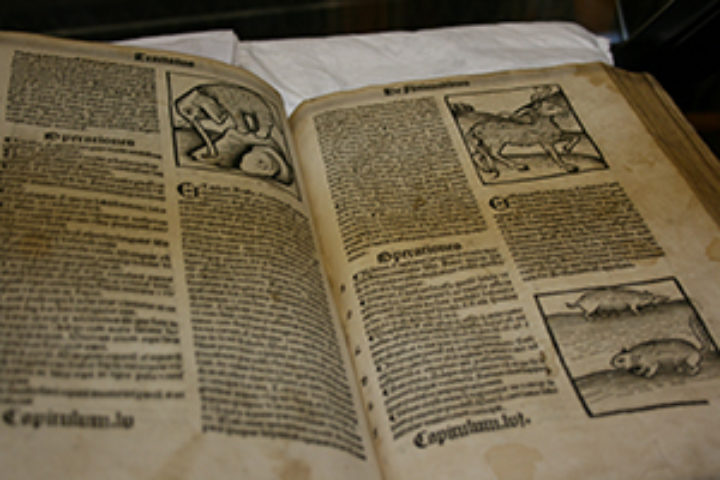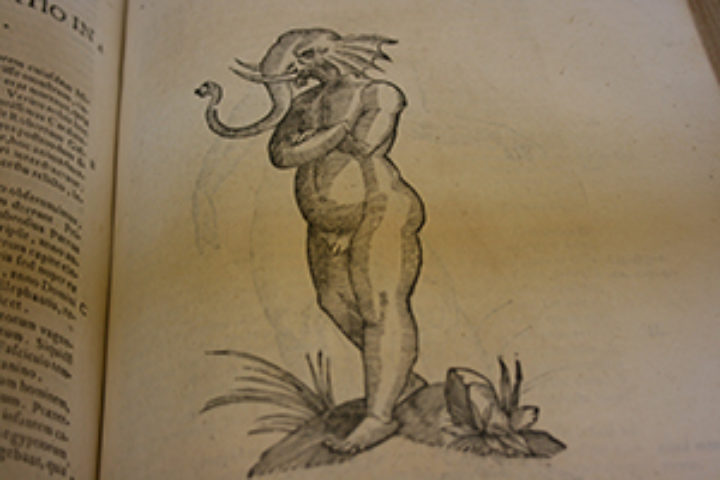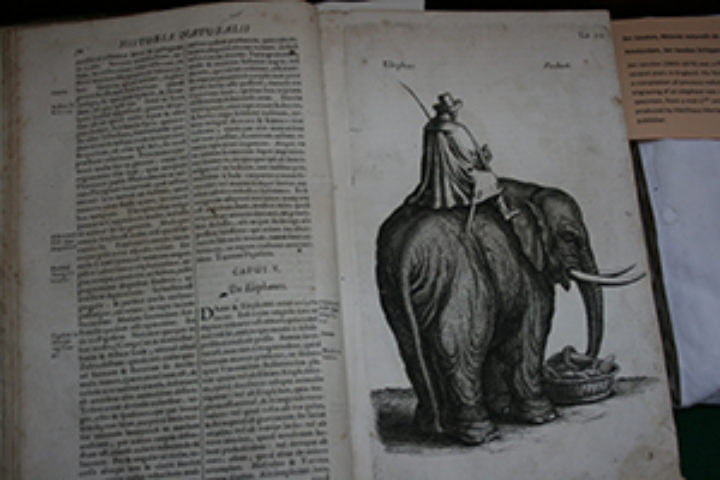9th May 2014: Early modern elephants - Science, Sex and Monsters
Published on 9th May 2014
Last week, Professors Adrian Lister and Tom Gilbert gave a wonderful talk at the Society on the 'https://vimeo.com/94186538' - it was a really good evening and you can watch a recording of the talk here . To coincide with the event the good folks in the Linnean library (Lynda, Elaine and Isabelle) set out a brilliant elephant themed exhibition which went down a treat with the audience. My favourite piece is the (improbably but still quite romantic) elephant mating scene. Anyway, Elaine has produced the below text to accompany the pieces. If you want to visit us at the Linn and have a look around the library, email me on events@linnean.org. Over to Elaine...
EARLY MODERN ELEPHANTS – SCIENCE, SEX AND MONSTERS
Our display concentrates mostly on early modern natural history works, which dealt with ‘quadrupeds’ (or mammals, as we call them now) – using some of the rare and beautiful books of our collections. It starts with the 15th-century Ortus Sanitatis (pic below) with a very naïve – but largely accurate! - picture of an elephant, then goes on through the 16th century with Gessner, Aldrovandi and Topsell’s works all reproducing the same image.

We couldn’t resist putting a copy of Aldrovandi’s Historia monstrorum (History of monsters, 1642) with the illustration of a boy with an elephant head, reflecting the early modern fascination with rare and mythical creatures, monsters and prodigies.

Jonston’s 1650’s images introduce another human element, with men riding elephants. The display then (of course) moves on to Linnaeus, with two of his manuscripts – one a student extract of Jonston’s work (‘Manuscripta medica’, 1727-1730), the other a notebook classifying medicines (‘Pharmacopaea Holmensis’, no date), with a recipe of using ground elephant’s tusks as a cooling and astringent medicine.

At the end of the chronological display, is the 1803 Houell’s Histoire naturelle des deux elephans male et femeile, with its intriguing image of two elephants copulating in the missionary position.

This work describes the habits and behaviours of a pair of elephants that the author had seen in 1797 - he also etched the illustrations. This posture seems to be impossible, even for young elephants with flexible extremities. Nevertheless, something like this has is said to have happened at least four times in the gardens around Het Loo palace near Apeldoorn, the Netherlands, in 1789. At the time, Stadholder William V’s elephants Hans and Parkie were only seven years old. The elephants were confiscated by the French in 1795 and later on transported to Paris as war trophies, but they never demonstrated this behaviour again.
